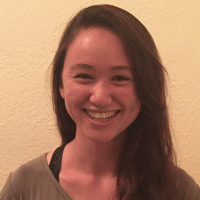


Sameer Sonkusale & Rachel Owyeung

We are a research lab at Tufts University with a strong interest in making flexible sensors and electronics for wearable and medical applications. Our research team consists of mostly graduate students and postdoctoral researchers with some undergraduate students. Being highly interdisciplinary, we have researchers from all backgrounds: electrical engineering, biomedical engineering, chemical engineering, mechanical engineering, material science, etc. Smart fabrics and textiles is one of the recent platforms for flexible bioelectronics that we are pursuing. We like this platform because threads and fabrics are universal and there is so much innovation still to be done.
The field of flexible bioelectronics is built on implementing strategies for better conformal contact between the electronic devices and the user's human body. There is a lot of research activity that exploits flexible polymers and soft materials to realise a suite of devices ranging from fluidics, electronics, antennas, batteries, sensors and even therapy. Textile is an ideal medium for this as the industry has refined threads for centuries to purposefully and comfortably place these-whether clothes or wound dressings-at the interface with the body.
The optical dyes that we used on our threads in our work in Scientific Reports are versatile. Since there are hundreds of different optical dye types, we can use the collective response of many optical dyes to create unique chemical 'fingerprints', where each gas has its own unique colour change pattern. This gives us the power to sense a wide range of gases, so the potential applications are immense. As an example of where our threads can be used, we have sewn some of our functionalised threads into our lab coats to help monitor our own lab environment. It can also be used in mining to detect hazardous gases much like a canary in the mine.
This is peripherally related to our work on smart threads. We have made a suite of bandages with several sensors that can monitor wirelessly whether a wound is healing. Doctors and caregivers get the information on their phone and prescribe treatments based on the progress made on healing. We also embedded flexible drug delivery platforms inside the wound dressing to deliver drugs on demand into the wound. This was the first of its kind closed-loop smart bandage for drug delivery.
This reel-to-reel processing enables fabrication of smart threads. To provide our threads with the ability to sense, we coat them or "dye them" with a sensing dye. To make them work as electrodes, we coat them in conducting ink. It is essentially a coating process to infuse threads with different sensing or functional inks.
This is an ongoing research activity. Results seem to be promising. When we have the full results, we will publish them soon enough for the world to see.
These are all possible areas of applications where smart threads can find potential applications. As and when we generate promising results on these areas, we will publish them.
Most of the innovative platforms related to sensing threads have been submitted for patent protection. There are ongoing discussions for commercialisation and we continue to welcome contacts from the industry to help us commercialise this further.
I think we covered many. I am sure space applications would be a perfect pie in the sky to aim for.
DISCLAIMER: All views and opinions expressed in this column are solely of the interviewee, and they do not reflect in any way the opinion of technicaltextile.net.